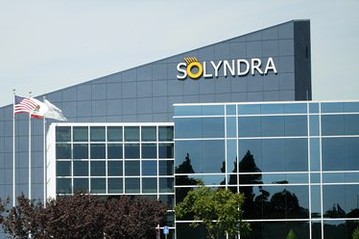
When Solyndra declared bankruptcy last year, the company identified a few reasons why the action was necessary: oversupply, regulatory issues, problems raising capital. But the main culprit, it said, was China, which it argued had undercut $1.2 billion in contracts.
Last week, the company filed a lawsuit against three U.S.-based, Chinese-owned solar companies. From the Christian Science Monitor:
The lawsuit is against Suntech, Trina Solar Ltd, and Yingli Green Energy Holding Co., and is asking for a sum of $1.5 billion in compensation.
Solyndra claim that the Chinese trio coordinated their pricing strategies to drop them 75% in four years. They used predatory pricing and price fixing to drive out the competition in the US.
Last year US solar manufacturers complained about the solar panels being imported from China and asked for protection from the low prices. This eventually led to a trade dispute between the two countries, culminating in high import taxes being levied against Chinese solar panels.
In their case against the three companies Solyndra remarked that they had come to the US to destroy US solar manufacturers, and had used the stock market to raise the capital needed to achieve that goal.
The Chinese companies deny this, unsurprisingly, with one saying the complaint consists of “unwarranted and misguided claims from a company that has a clear history of failed technology and achievements.” Over at Quartz, Christopher Mims is inclined to generally agree:
Solyndra made tube-shaped solar collectors because they were good at optimizing what was, at the company’s inception in 2005, a scarce and extremely expensive good: the pure, crystalline polysilicon needed to make a solar panel. Solyndra’s “big idea” was to change the shape of the solar panel so that it could get the same performance using significantly less silicon.
At first, this seemed like the right bet: In 2008, the cost of polysilicon reached $400 a kilogram. Today that same kilo will cost you $30.
Companies that continued to make conventional, flat solar panels were able to reap the benefits of this collapse in price. And what brought about this price collapse was an explosion of US and global polysilicon manufacturing.
In short: It was Solyndra’s bad bet, not China’s bad practices, that doomed the company. The free market at work.



